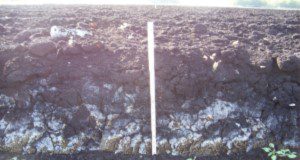Fusarium wilt of lettuce is a disease caused by the fungus Fusarium oxysporum f.sp. lactucae. The disease is present in all lettuce production areas worldwide. Recently this disease has been identified in Florida in localized fields. This new 4-page publication of the UF/IFAS Horticultural Sciences Department presents information about the disease, symptoms, and control measures useful to lettuce growers in Florida. Following these recommendations may help to avoid the spread of this fungus in muck soils at the Everglades Agricultural Area (EAA), where 90% of the lettuce in Florida is planted. Written by Germán V. Sandoya, Jesse J. Murray, Richard N. Raid, and Christian F. Miller.
https://edis.ifas.ufl.edu/hs1385
Tag: EAA
Everglades Agricultural Area Soil Subsidence and Sustainability
This 4-page major revision, a publication of the UF/IFAS Department of Soil and Water Sciences, highlights the current status of Histosols within the Everglades Agricultural Area in southern Florida. Over the last century, soils within the region have gradually been lost via oxidation, a process commonly referred to as soil subsidence. The rate of subsidence is gradually declining, due to factors such as increased mineral content in soil, humification, and water management (maintenance of higher water tables). Best Management Practices and crop rotation help slow down the rate of oxidation and promote soil sustainability within the region. Written by Jehangir H. Bhadha, Alan L. Wright, and George H. Snyder.
https://edis.ifas.ufl.edu/ss523

